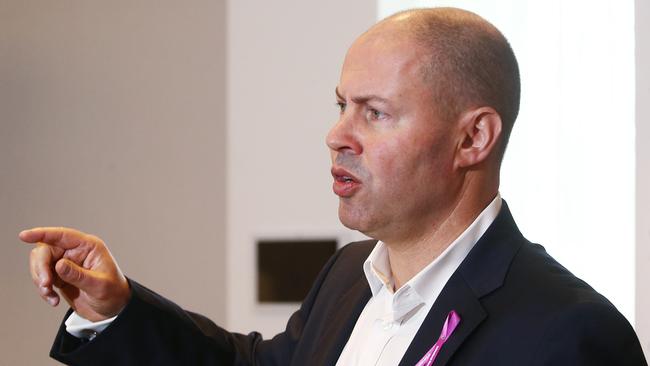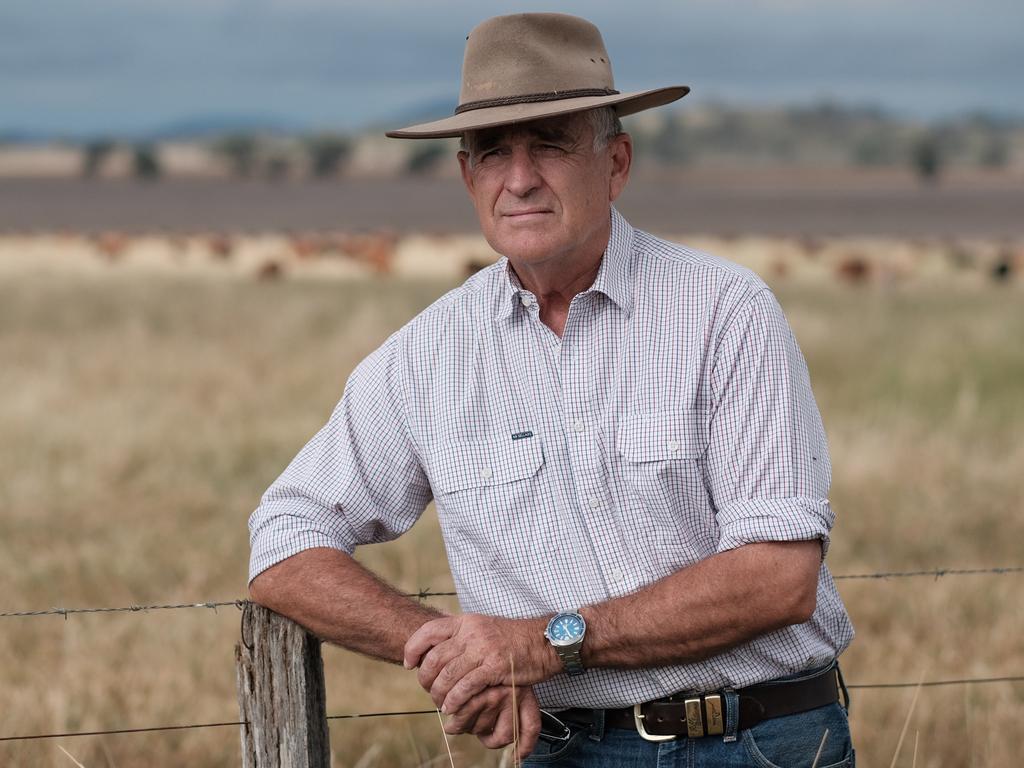$120bn savings war chest fires economic recovery
A savings war chest of over $120bn is driving property, retail and suggests the end of JobKeeper won’t spark a major downturn.

A savings war chest of more than $120bn accumulated during the pandemic is driving resurgent property and retail markets and increasing confidence among economists that the end of JobKeeper this month will not spark a significant downturn.
Momentum is being driven by auction clearance rates, which reached more than 80 per cent in every capital city at the weekend, with mortgage brokers saying every region in the country was seeing a flurry of buyer interest.
Josh Frydenberg is contemplating targeted support — including grants for the aviation industry and extending incentives to employ trainees — following the end of JobKeeper at the end of March, although his NSW counterpart Dominic Perrottet has urged the government to end the wage subsidy. “We cannot continue to make decisions today that impact generations to come,” the NSW Treasurer said.
The Commonwealth Bank estimates that households have put aside $120bn more than what is normally saved in the June, September and December quarters — equivalent to 6 per cent of gross domestic product as overseas travel and social activities were curtailed.
The bank’s analysts believe this money will be spent over the next few years, providing economic momentum. CBA’s head of Australian economics, Gareth Aird, said: “I think a good chunk of it will find its way into consumer spending — households will smooth consumption over a few years by drawing down on some of the accumulated savings.”
“There will be a boost on services spending in 2021 in particular and some of that will be funded from savings accrued in 2020.

“In addition, some of the savings will be used to pay down debt and some of the money may go into other assets — housing or equities for example,” he said.
New figures published on Monday showed auction clearance rates this weekend lifted to 84.5 per cent across the country, compared to with 81.9 per cent last week. That was driven by a rise in Sydney’s clearance rate to 86.7 per cent, according to CoreLogic.
The auction activity has sent some property prices skyrocketing, with one four-bedroom house in Sydney’s south selling in late February for $1.3m above reserve.
The same day, a property in Melbourne’s inner western suburb of Flemington sold for $2.5m, $600,000 above expectations.
Reserve Bank figures published on Monday showed the nation’s credit card bill dropped by $7.38bn in January compared with one month earlier, with the majority of people choosing to purchase with their savings rather than increase their debts.
As housing prices sharply exceed auction reserves, one of the nation’s most senior bankers urged borrowers to be cautious.
National Australia Bank chief executive Ross McEwan told The Australian: “We have to be very careful here in a hot market that those people who are borrowing money today cannot only borrow it at today’s rates but can borrow it at rates that will be higher in the future. Because as we know, rates go up and rates go down.
“Never be thinking that rates will stay at this level for ever.”
Ten and 15 year bonds were already starting to “tick up’’, he said, although Mr McEwan added he was confident rates would stay low until at least 2023 or early 2024. “After that rates may well go up and we need to be careful that people can afford the borrowings they are taking today,” he said.
Mr McEwan said borrowers should take advantage of low interest rates to pay down debt.
“This may be strange coming from a banker,” he said. “But when interest rates are really low, that is a great time to be paying off the principal of a mortgage and your other borrowings.
“That’s the message I’d give to people. While interest rates are low, pay down as much of the principle as you can so when interest rates do go up … you’re in a much, much better position.”
Shares have surged nearly 50 per cent from their pandemic lows last March, with valuations of technology, healthcare and some consumer-focused companies surging as cheap money floods investment markets.
At the same time, dividend payments have resumed with big miners leading the way in sending billions of dollars back into shareholder hands with the help of a surge in iron ore prices.
The benchmark S&P/ASX 200 closed up 0.4 per cent on Monday at 6739.60 points, putting the stock market less than 6 per cent below its record high last February.
Economists including Deloitte Access Economics partner Chris Richardson said the end of JobKeeper was “less scary than people realise” given the payment had already been tapered late last year. “People have an outdated view of how big that is,” he said.
Mr Richardson said a focus on GDP understated how living standards had improved over the second half of last year. While GDP showed our economy was 1.1 per cent smaller than a year ago, he said, the more pertinent story was “real national income” now 2.1 per cent above pre-pandemic level.
He said high iron prices and ultra-low interest rates were the drivers of the income boost.
“The world has given Australia a pay rise and a big cost cut. That bucket of money of excess saving will certainly help,” he said. “I don’t know how much of it will be spent, but we do know that the more relaxed and comfortable people are the more money they will be prepared to spend”.
Carlos Cacho, chief economist at investment bank Jarden, wrote in a client note on Monday that 1.1 million workers still relied on JobKeeper while 1.4 million received the JobSeeker supplement.
Despite immediate effects, Mr Cacho still forecasts a 20 per cent increase in housing prices over the next three years which will underpin a “wealth effect” and encourage consumer spending.
Mr Aird said an important factor in economic recovery would be how much of the savings drawdown was spent on domestic goods and services.
“When a consumer buys a meal at a restaurant or gets a haircut, the money spent ends up as income to the restaurateur or the hairdresser,” he said. “So, any drawdown of savings will boost income in the economy simultaneously.”
The Treasurer on Sunday began a tour of Queensland starting in Cairns and is expected to outline the government’s plans for more economic support after the end of the coronavirus payments.
“It’s about targeting that support but also providing opportunities for those who are doing OK to even take on more workers, which is going to be good news for people across the country,” he said.
Ernst & Young chief economist Joanne Masters said December quarter national accounts showed consumers were willing to dig into savings built up last year in order to keep spending. But she said that incomes would stagnate as government support was withdrawn.
“To some extent this will be offset by the recovery in employment and hours worked, but Australians are still facing a prolonged period of weak wage growth,” she said.
“In fact, real wages could go backwards this year, and that will be a headwind. At this stage, we haven’t seen the true extent of economic scarring but that is likely to become more evident through April and May. We are likely to see some job losses and insolvencies and that will be challenging for those households impacted”.
PwC Australia chief economist Jeremy Thorpe said he suspects many people “are itching to use those savings given that the risk of job loss seems diminished.”
“The above-COVID consumer confidence levels reinforce this positive attitude,” he said.
Mr Thorpe expects to see a small jump in unemployment when JobKeeper expires.
“However, the continuing improvements in the labour market, and information captured by the banks on the growth in regular incomes, suggests that we have handled the initial reduction in support and gives some confidence that the next adjustment in support will also be relatively smooth.”







To join the conversation, please log in. Don't have an account? Register
Join the conversation, you are commenting as Logout